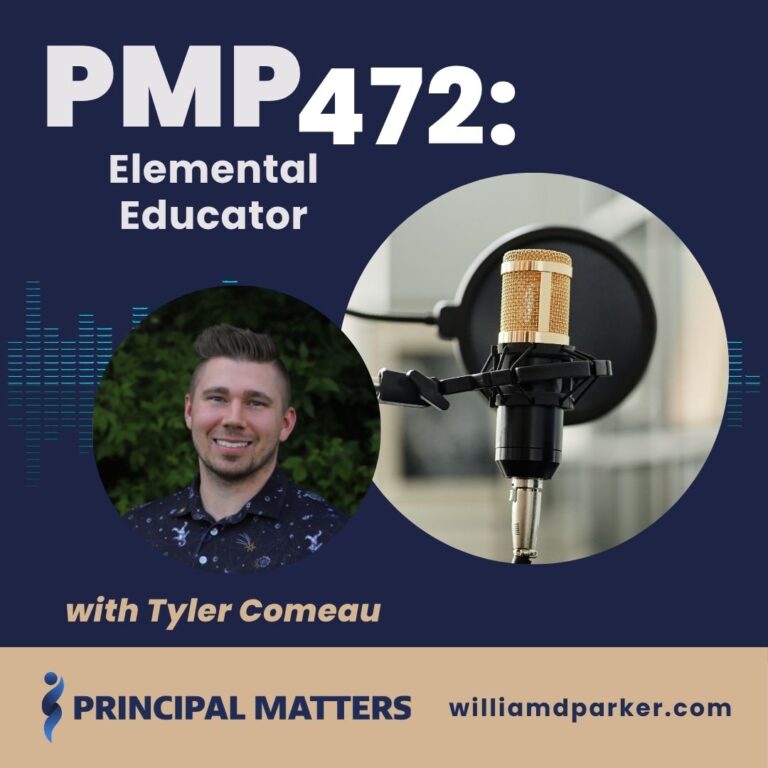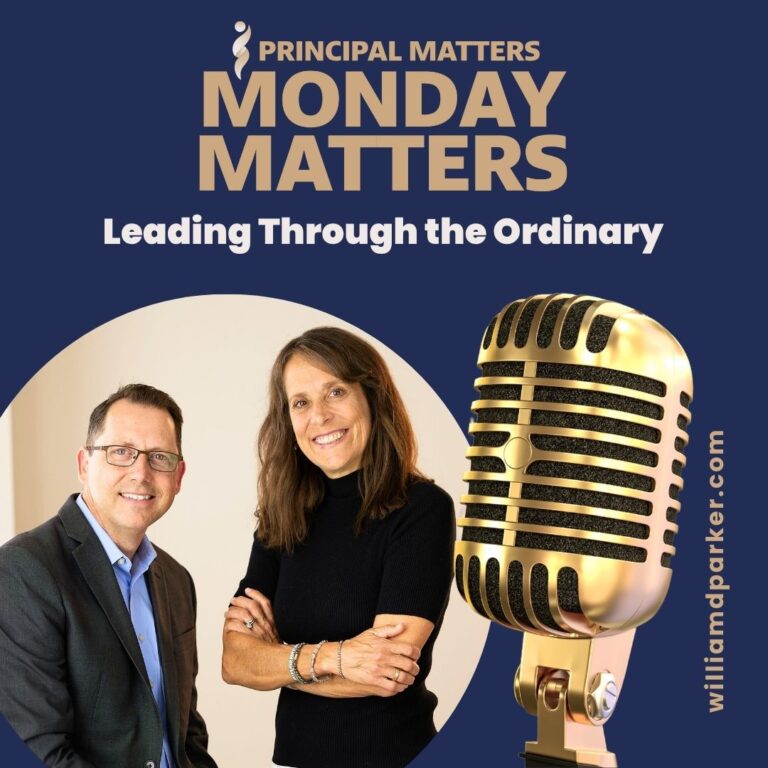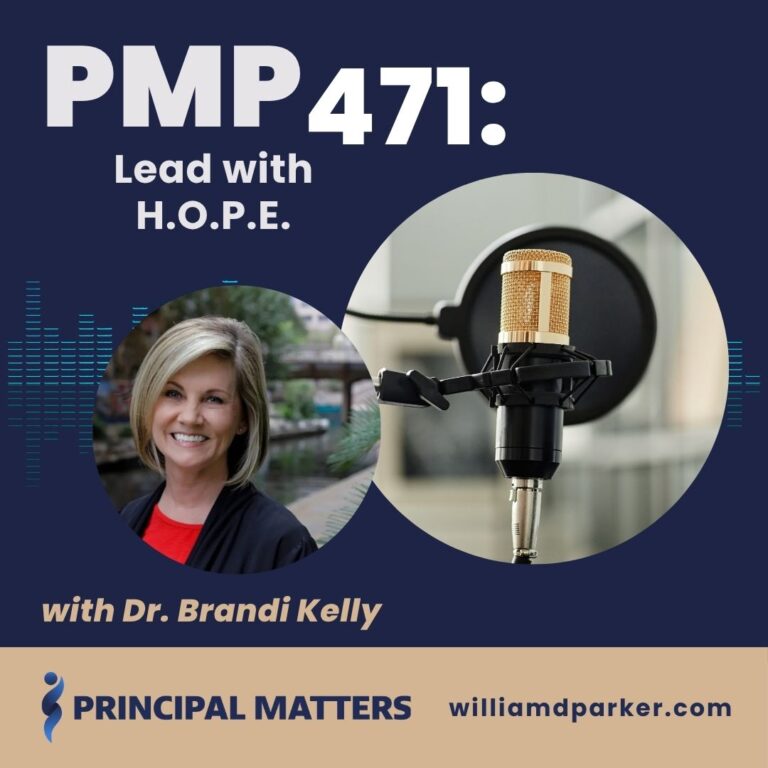Podcast: Play in new window | Download
Next week, I have the privilege of gathering together with educators and school leaders for a Leadership & Learning Conference in Norman, Oklahoma. Guest speakers Jeff Zoul, Jack Berckemeyer, and Christine Handy will be on hand to share best practices. I’m looking forward to circling up with other educators who enjoy being life-long learners.

Gearing up for this time of learning reminds me of last year when I heard a presentation by Will Richardson, educator and author, who shared stories about new ways students are interacting with learning today. Here are three examples he shared:
- He talked about Nate Butkus, a 7-year-old boy who has started his own science podcast.
- He shared the story of a young man in India, Siddarth Mandala, who is beta-testing self-protecting “shock” shoes for women to protect them from rapists.
- He showed photos of students who are building tree-houses in their school cafeteria to replace traditional furniture.
The common thread among all of these students is the new ways they can learn today: their abilities to find resources, access information, and see examples that feed and inform their passions.
If we are living in a new world of learning where students constantly have access to create, design, connect, and produce inside and outside of school, Richardson asserts we must rethink three areas: beliefs, contexts, and practices.
Here’s are three questions Richardson explores:
- How does this change our beliefs?
We must be willing to rethink what we believe is effective learning; we cannot simply base this on tradition. Instead of making “student-driven learning” an elective or encore period, let’s completely design school around their passions and interests. - How does this affect our contexts?
Research shows that more students are actively disengaged rather than engaged; and technology often places us in “echo chambers” where we only access information from others with whom we share common interests. We must rethink how to keep students engaged in learning that is truthful, discerning, and meaningful. - How does this influence our practices?
We must become “skill” centered instead of “content” centered if students are to demonstrate mastery. We must move from the ever-increasing world of assessments for knowledge toward a world of application for learning. If students are really learning, they should be mastering new skills, not simply memorizing information they can easily access via a Google search.
Another Example of New World of Learning
Richardson’s presentation reminded me of a former student of mine, Jesse Haynes, who is now studying at the University of Tulsa. As a college communications major, Jesse’s professors have allowed him to begin podcasting as an independent study. Last year his podcast, The Others, a fictional narrative of a man stranded on a tropical island, hit over 1 million downloads.
Jesse did not wait for a college degree to pursue his passions or reach a million listeners with his content and creativity. Instead he combined his degree plan with his passion, and he’s already practicing and applying those skills now. Jesse’s examples as well as the ones Will shared point toward an important question for each of us to consider even in our own professional or personal growth: Whose permission do you need to produce, create, design, or share your ideas?
This is our new reality. People are longer just relying on traditional classes or internships to learn new skills, to share ideas, to begin businesses, or to launch products. So, what does this new reality mean for those of us in educational leadership?
An Example from My Own Learning
Let me give you an example from my own life. In 2012, after I was named Oklahoma’s assistant principal of the year, I had been asked to present at graduate classes or workshops. I realized I had a learned a lot valuable lessons to share from my years as a school administrator. I began to ask myself how I could find more opportunities to train, teach, or share with aspiring school leaders. One path for doing this would have been to pursue my doctoral studies in education. This may have helped establish my credibility as an expert in my field. Or maybe it would allow me to someday teach at the university level.
But I made a different decision. I decided to being blogging instead. By sharing content online, I was able to catalog the lessons I was learning. I was sharing these ideas with school leaders while still practicing in my own school. And as a result, I was able to self-publish my first book, start a podcast, and see my second book published by Solution Tree Press. All of this content creation has opened doors for me to work with school leaders across my state and across the nation.
Here’s my point. I did not wait for someone’s permission to begin learning, growing, and sharing ideas I thought were important.
It’s easy to see how that has affected my professional growth, but why does this matter for your school leadership? As I visit with school leaders, I hear many of them share their disappointment, anger, or disillusionment at the public’s perceptions of our schools. We live in a time when public schools are under constant assault. Whether it is the portrayal of public schools as failing institutions or the lack of funding for schools, principals face challenges on two fronts: one, we must be creating the best environment for learning. And two, we must also be advocating for why our schools need public support.
In light of these conversations about the possibilities we have for producing, designing, learning, and growing, here’s my next question for you: Whose permission are you waiting for to take back the narrative about the importance of your schools?
3 Ways to Take Back the Conversation About Your School
We have never lived in a time when we have access to so many options for sharing, publishing, illustrating, and highlighting the good work happening in our schools. Here are just three examples of ways you can be doing that right now:
1. Start a weekly school newsletter.
You may have a talented teachers or group of students who can help you collect great photos, images, or stories about learning, activities, or competitions happening throughout a week of school. Set a schedule for sharing this out. Whether you do this through Microsoft Publisher a Word template or by starting your own school blog, set a time each week to share a link with parents and your community members. At my school, we shared a summary of the week every Friday afternoon. It’s a great way for parents and community members to hear specific examples of positive learning happening in your school. Here’s a great example of a new school blog from Canton, Oklahoma Principal Adam McPhail.
2. Use social media to promote your school.
Whether it’s via Twitter, Instagram, or Facebook, choose a platform where you can post images, reminders, and updates for parents. One year I even paid to boost Facebook posts we wanted to be shared outside our own school community. When Aspasia Carlson was principal of John Marshall High School in Oklahoma City, she set a great example of how to use Twitter to showcase her school. It’s no coincidence that she had amazing support from local foundations who enjoy supporting these great students she highlights every day.
3. Share stories with your local newspaper or other media sources.
Whether it is print media or television, media outlets are constantly looking for ways to engage an audience, increase traffic to their websites, and capture new subscribers. You can help them do this by sharing lots of great images and stories about students from your school. Don’t wait to be asked for a good story. Discover who are the best contacts for your local media outlets and begin emailing them the same updates you do your parents. They may not publish everything you send them, but when they do pick up on one of your story, then the reach of your school has just expanded to all their members too.
Include Students in Your Messaging
In connection with all these steps, I also believe it is important that you learn to engage students in ways to broadcast about your school. Last year we had student leaders who would create their own Twitter hashtags for events happening at the school, making videos to share in student assemblies, or broadcasting livestream from games or competitions.
Students are smart and creative. Use their talents to expand the ways your school is communicating. Last year, for example, when I visited my state capitol to talk to legislators about the need to increase school funding, I didn’t travel alone. I took a small team of students with me. Lawmakers were happy to meet students, talk to them about the processes involved in government. Plus, we share photos from the visit via social media, our newsletter, and with local media.
Let’s Wrap This Up
As I listen to others talk about the new era of learning available for students, let me encourage you to think about how these same opportunities apply to your own school leadership. You may not own a media company, but you have powerful tools available to you every day for sharing with others about why your schools matter. Public school leaders do not need to wait for someone to discover a silver bullet for changing the narrative about our schools. We already have access to do that today. Imagine what happens if hundreds, thousands, or millions of educators unite around a commitment to talk about the great things happening in our schools. The momentum we can build could completely change the way people talk about schools.
Now It’s Your Turn
What ways can you embed practices in your schedule for sharing about your school’s successes? Think of one new action you take this school year to celebrate the good work happening in your school, and then find others who can help you reach that new goal?
Sign-Up For Free Updates and Ebook
When you enter your email address below, you will automatically receive my newest posts and a free Ebook, 8 Hats: Essential Roles for School Leaders. Let’s keep learning together!
Subscribe for free weekly updates and receive free e-book!
(function($) {window.fnames = new Array(); window.ftypes = new Array();fnames[0]=’EMAIL’;ftypes[0]=’email’;fnames[1]=’FNAME’;ftypes[1]=’text’;fnames[2]=’LNAME’;ftypes[2]=’text’;}(jQuery));var $mcj = jQuery.noConflict(true);
Principal Matters–The Book!

School leaders are very busy, so each of the twenty-four chapters is designed as a quick-read and followed with take-action questions for follow-up or reflection. If you want practical ideas on understanding your purpose, managing school teams, dealing with challenges, and leading with courage, action, motivation, and teamwork, go HERE to pick up a copy for you or your team.
Messaging Matters

Harness the power of messaging to create a culture of acknowledgment, respect, and celebration. Written specially for leaders, this title is divided into three parts, helping readers to maximize their role as chief communicators with students, teachers, and parents and community. Each chapter includes suggestions for using digital tools to enhance messaging and ends with reflection questions and practical next steps.




